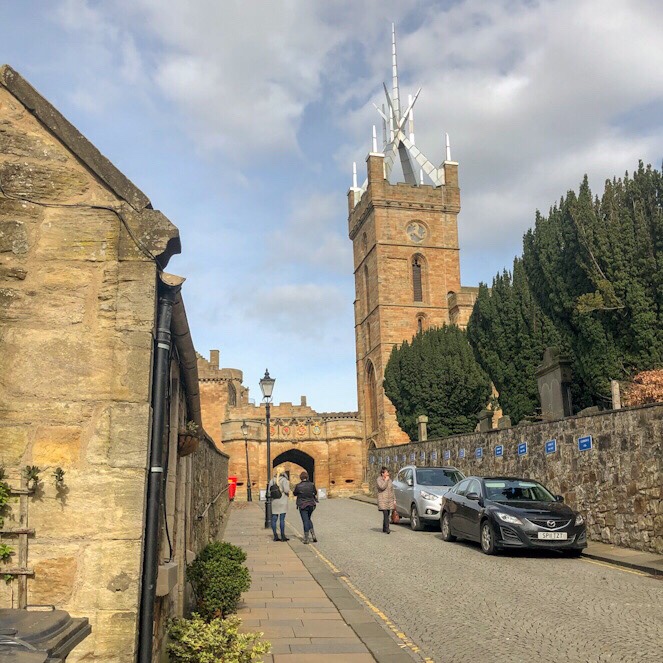
I had 48 hours to scour Scotland, and when weather proved advantageous, I knew that I wanted to explore more than beyond the city limits of Edinburgh. I wanted to visit one of the smaller historic towns that also played a significant role in both Medieval and Stuart-era history. I selected Linlithgow as the first of two other cities to which I would venture. It is also at much less of a steep incline than Edinburgh and Stirling, so visiting there gave my weary legs a bit of a break! The chief highlight and attraction in Linlithgow for history enthusiasts is the ruined palace of Linlithgow right next to the Loch. Even though five hundred years ago it would been magnificent, today it is left scarred and in ruins from centuries of disrepair and a fire that destroyed the interior. The palace served as a primary residence of Stuart (or Stewart) Kings and Queens of Scotland which I will touch on, and remarkably it is credited as the very first ‘palace’ of Scotland or at least the first residence dubbed such. Several other highlights that I got to experience in Linlithgow were a glimpse of the famous Mary Queen of Scots statue, Linlithgow Loch, dining at a local favorite – the Four Mary’s, and the very impressive St Michael’s Parish Church.
How to get there?
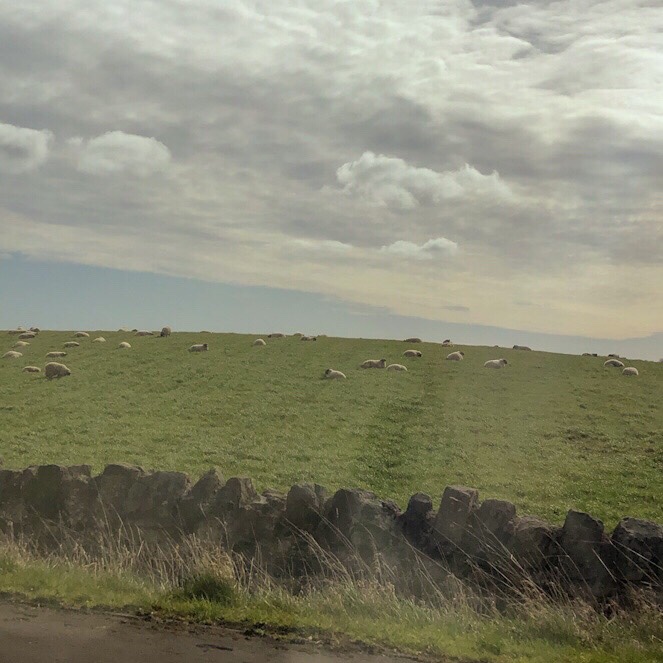
Linlithgow is situated in West Lothian, fifteen miles west of central Edinburgh. It can be reached by frequent train intervals from Edinburgh Waverly, but I actually wound up taking an Uber after comparing costs and routes on the fantastic Rome to Rio , Trainline, and ScotsRail which allowed me to monitor trip estimates, times, and routes. From my pick-up near Calton Hill in Edinburgh to my drop-off point in central Linlithgow, it cost me 30 pounds not including an optional tip which made it all the more worth it because my friendly driver decided to take me along some of the countryside. Typical price ranges for utilizing Scotsrail and buying a one-way or round-trip ticket with one-ways costing (depending on timing, prime commuting hours are a little higher) anywhere from 5 to 12 pounds. There are even cheaper options, such as traveling there by bus. Buses depart every 30 minutes from Princes Street in Edinburgh that go all the way to Linlithgow. Also keep in mind that there are tours on Viator and Get Your Guide that include stops in Linlithgow or one of the nearby castles.
Searching for History in a Ruined Palace
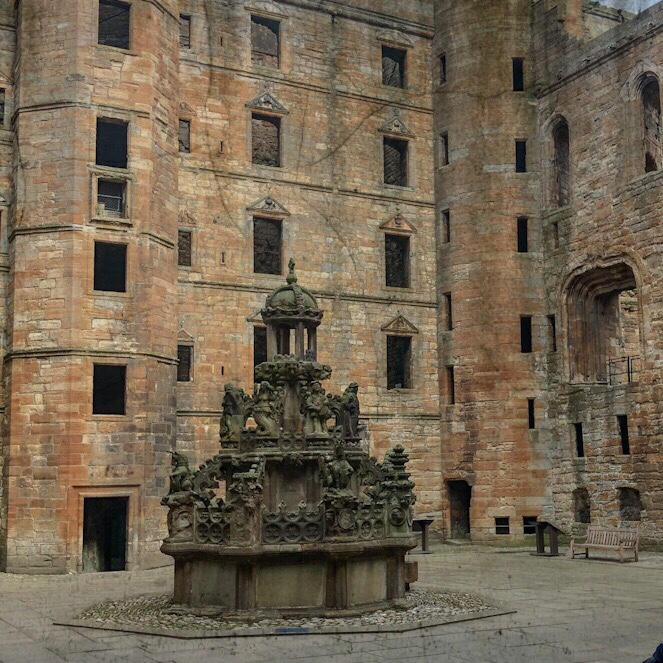
Linlithgow Palace today is a shell of the elaborate palace that had once impressed Mary of Guise, perhaps arguably an even more intriguing figure in history than her daughter, Mary Queen of Scots. During initial courtship before marrying the Scottish king James V, she even rebutted English monarch Henry VIII ‘s suggested proposal to him stating that she would marry him if she had but a second head to spare. This was a reference to Henry having Anne Boleyn executed. Mary of Guise married James V and gaven birth to several sons that all died in childbirth before giving birth to Mary at Linlithgow Palace afterwards, when James V died only days after the birth, she ruled as Queen regent on behalf of their infant daughter Mary, Queen of Scots. She ended up having to send her daughter to France to avoid Henry VIII’s violent attempt to marry infant Mary (to add to the oddity, she was his great-niece) to his own infant son, Edward VI of England. During the strange episode known as The Rough Wooing, Henry’s quest was to wed the two infants and “unite” Britain after hundreds of years of warfare between the Scottish and English. Henry VIII’s attempt to force the marriage, although unsuccessful, resulted in several violent skirmishes.
Linlithgow Palace was where infant Mary was born and lived for seven months before being moved to Stirling Castle, a nearby bona fide fortress. She was moved to France at age 5 and spent the next 12 years there. She had been proclaimed Queen of Scotland when she was just nine days old. It is ironic to note Mary, Queen of Scots, would have likely first married a sickly prince either way: Francis of France, whom she did marry, died prematurely, resulting in her early widowhood. Henry VIII’s son Edward lasted only six years on the throne before succumbing to illness.

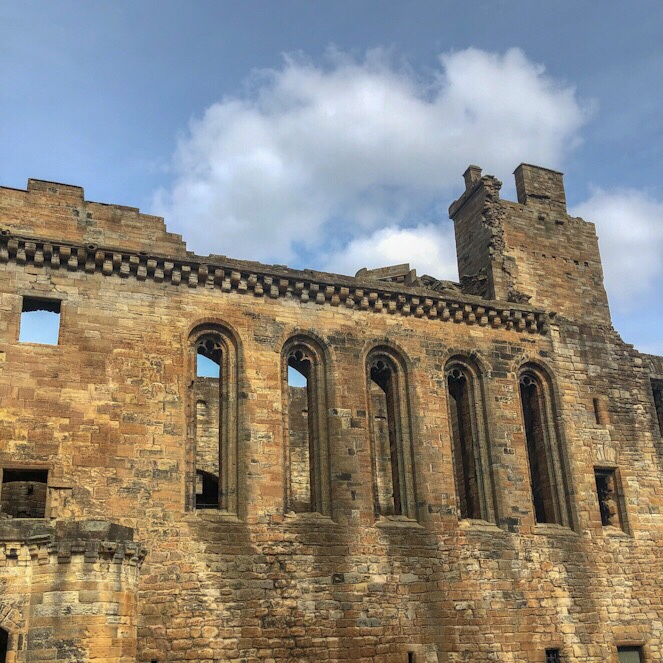
Linlithgow Palace offers quite a contrast after visiting another Mary Queen of Scots location in Edinburgh, Holyroodhouse Palace, which I spoke in brief about here. Apart from being born here as an infant, she did stay here several more times. The last occasion was in 1567 two weeks prior to her marriage to her third husband, Lord Bothwell, and her first of many years of imprisonment.
The admission fee is considerably cheaper than similiar attractions at 7.20 pounds, and can be included in the Scottish Explorer pass available to tourists visiting or citizens of the United Kingdom alike. The palace may lack the tapestries of castles and palaces not in ruins, but you can imagine how it would have impressed courtiers at the end of the 15th century! It still features the famous King’s Fountain, with its detailed carvings of the Stewart dynasty, as well as towering spiral staircases. The Palace overlooks the loch of its name, and the greenery surrounding the palace, known as the Peel, is a frequent place for tourists and townspeople alike to picnic.
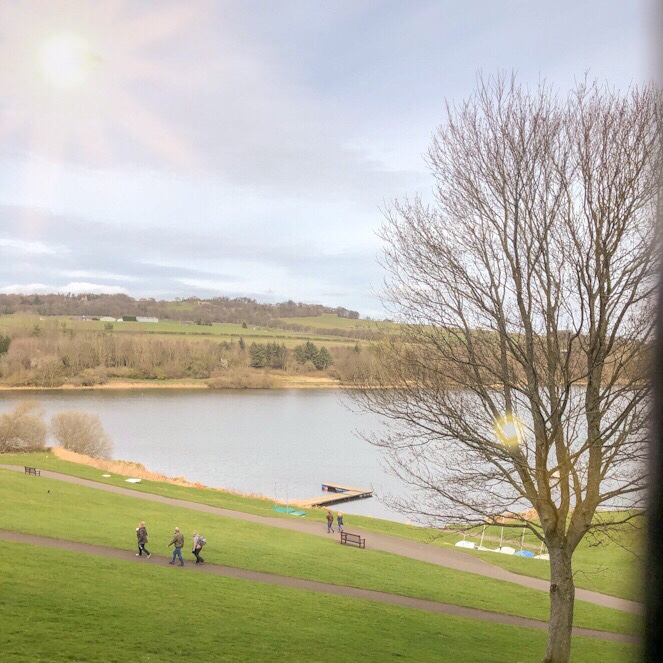
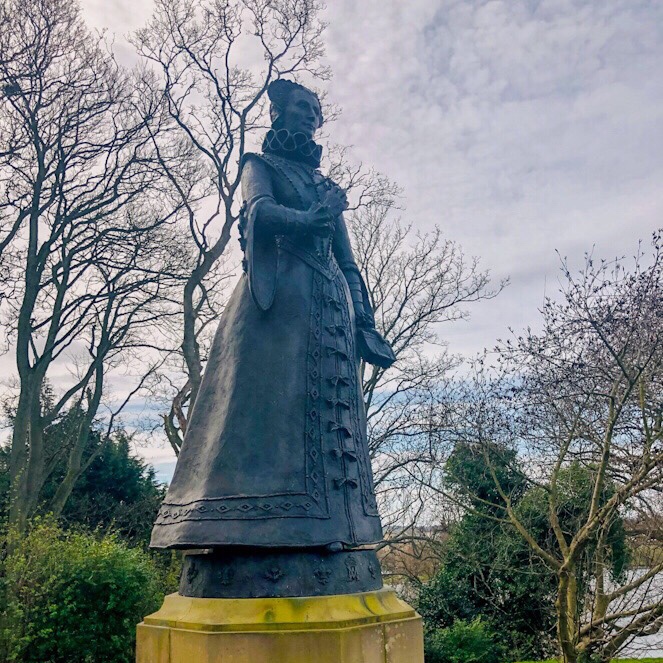
Do note that there are certain sectors that may occasionally be closed off, and with it being ruins, it often has places where you can easily lose footing as you wander around the interior and corridors. A large chunk of it was closed for presumably some renovation work to keep the ruins as stable as possible for visitors. This, like other castles and palaces of Scotland and England, can be subject to closure in inclement weather, so monitor Scottish Heritage on social media for any potential closures or hour changes here.
There was a lake there years ago an old local told me
Francis Duggan
It is now a shrubby valley where Lake Linlithgow use to be
The creeks that did flow into it stopped flowing years ago
Yes climate change it is for real as we have come to know,
The old bloke into his seventies has enjoyed a long life span
He used to swim in Lake Linlithgow when he was a young man
And only puddles of water in linlithgow despite the recent heavy rain
And boats sailing where the lake once was will not be seen again,
The old bloke he seemed sprightly though the years had left him gray
He said about Linlithgow thought I’d never see the day
That where a great lake once was only scrub now grow
I used to fish with my mates there but that was years ago,
Only shrub grow in Linlithgow the old bloke shook his head
It used to be a great lake when I was young he said.
A Most Magnificent Church: St. Michael’s Parish
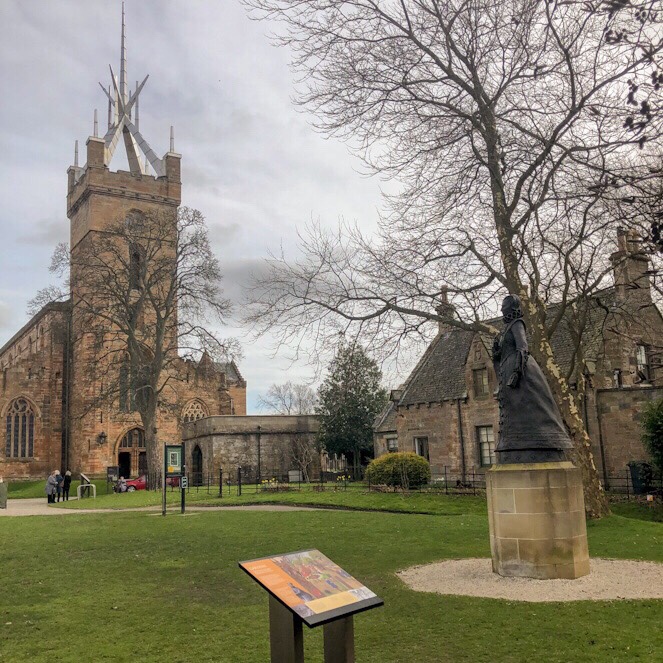
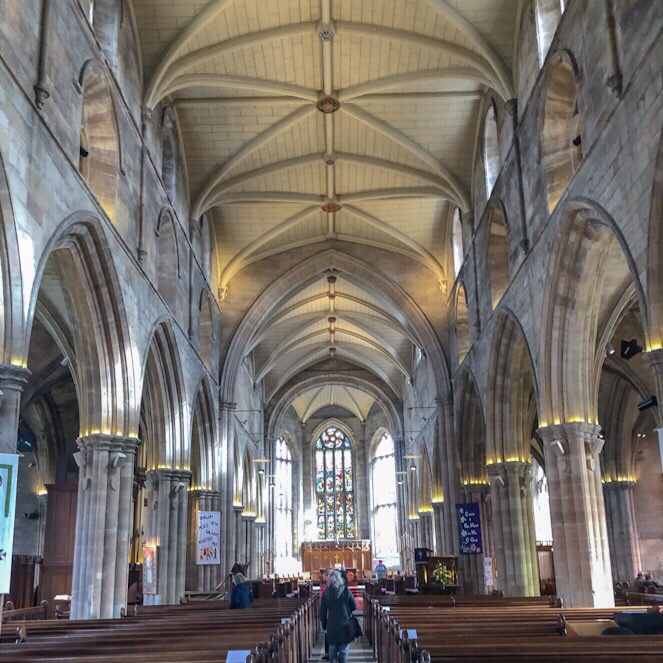
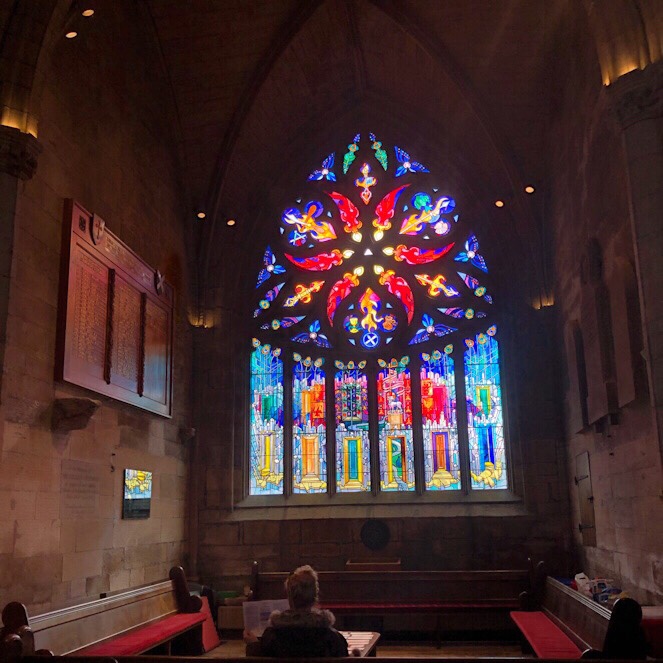

On my way out of Linlithgow Palace and its grounds, I was struck by a church just adjacent to the entrance with architecture that melded old and new. I nearly abandoned visiting as I was starting to get hungry by this point, but something compelled me to take a peek inside without having known the history of it at the time. In an odd way, the top of St. Michael’s Parish Church reminded me of St. Gile’s Cathedral . When I took a step inside for a visit, I was immediately blown away by the sheer magnificence of the nave and the stained glass. It is funny that sometimes the places we don’t plan on visiting are some of the most memorable.
It is named after the patron saint of Linlithgow, St. Michael. Its proximity to Linlithgow Palace made it a frequent location where kings and queens of Scotland prior to Mary, Queen of Scots would have worshiped. This church was where the infant Mary was baptized. The church was much the same until around 1560 in which reformers destroyed some of the statues on the inside and outside. They accused the church of being papist in sympathies, and this made the former Catholic church a target for pillaging during the religious wars that continued through much of 16th century in Scotland and England alike. The beautiful nave existing today is also where Oliver Cromwell’s troops, comprised of Puritans and Catholics alike, briefly stayed and worshipped. The modern interior is by in large mostly done from the reconstruction following the religious wars that plagued Britain. This church is also not to be confused with the nearby St, Michael’s Roman Catholic Church, which is also a short walk from the palace grounds.
This was a church that fell victim to some rather dark history. It was ransacked during the height of the religious movement in the early to mid 16th century. It also the site of where James Stewart, Earl Moray, Mary Queen of Scots’ half brother and regent to her son (not to be confused with her son of the same name, the future James VI of Scotland/James I of England), was assassinated. As regent, he became the first head-of-state of Scotland to have the misfortune of being assassinated and by yet another James, James Hamilton.

Linlithgow: The City
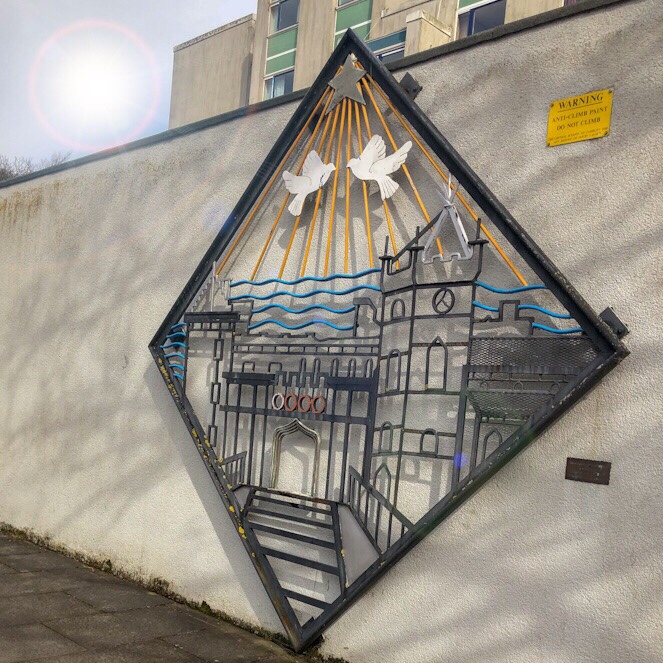
“St Michael is kinde to strangers”.
Linlithgow’s Town Motto (St Michael is Patron Saint)
Linlithgow is a lively town in West Lothian of about 19,000. Its palace is but one of several very lovely things there, and the street art I discovered along the side wall of a post office proved there was more than meets the eye. There is a fountain in the city center that intentionally resembles the fountain in the courtyard of Linlithgow Palace in the city center. The city was founded by King David of Scotland in the early 14th century and was originally designed to be a military base with wooden fortifications. Those same wooden fortifications made a fire that destroyed much of the town all the more destructive when a fire destroyed much of the village and the wooden walls in the early 15th century. The city’s main attraction is still the Palace and a stop between several castles in West Lothian for tourists to visit, but curiously the Loch makes it an attraction for outdoor visitors as well. The swans that are said to roam about are said to be “left over remnants” from when Cromwellian troops took over Linlithgow.
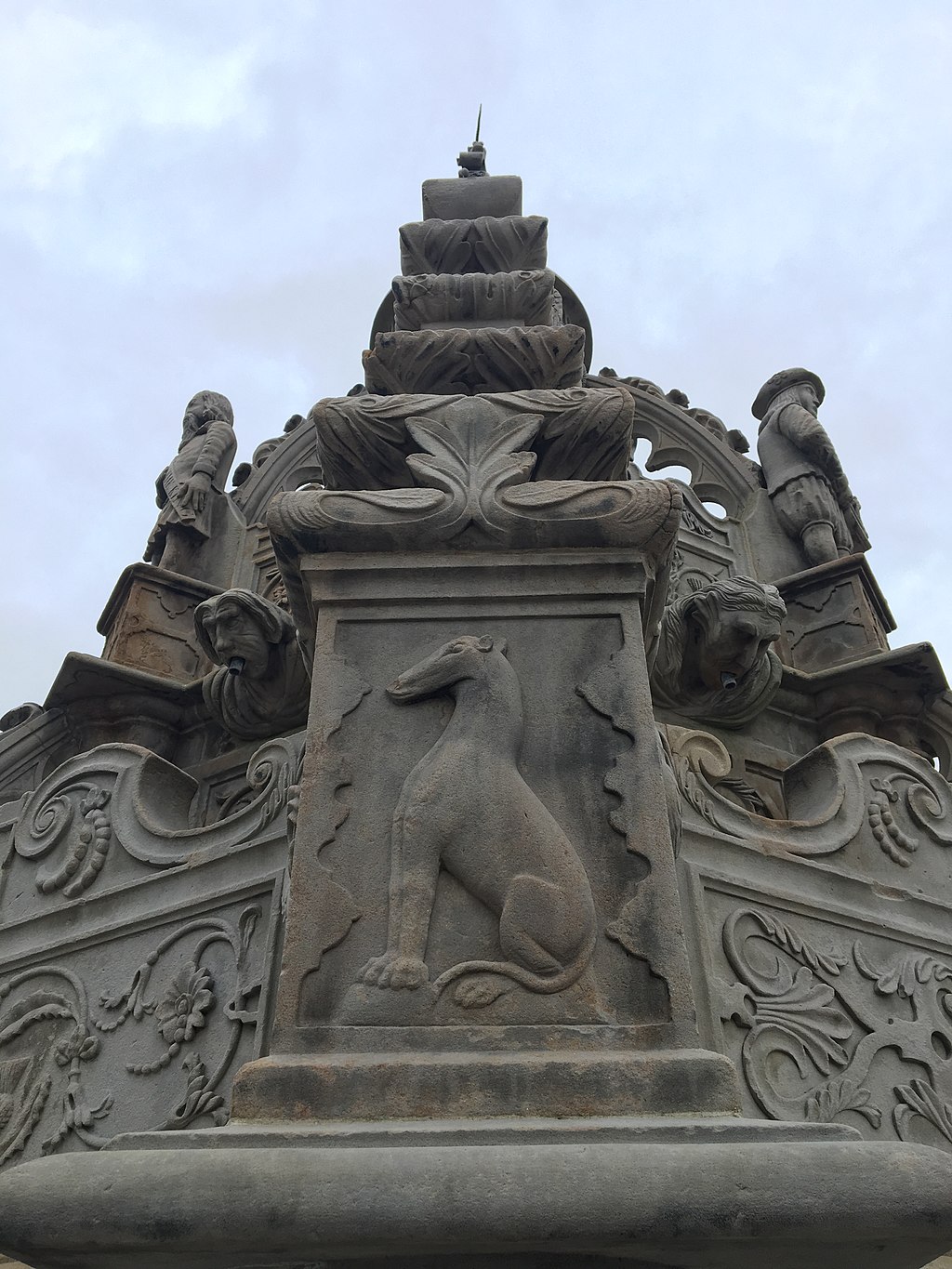
One story that peaked my interest stemmed from me noticing on lampposts and the very crest of Linlithgow itself, the symbol of a black dog, which is referred to in another term. It is said a man once from the area was sentenced to death by starvation on a nearby island, but his resolute black greyhound canine decided to swim out to the island resolutely to give him food. Regardless of the truth of it or not, residents to this day to still refer to this legend both in verbiage and in imagery as The Black Bitch and supposedly refer to themselves as such.* There is even a local pub named after that legend. I cannot attest to having met anyone that volunteered themselves as such , but it makes for a good town story and supposedly residents identify as the plural moniker. For some curious insight into what Linlithgow has evolved to in more modern times, I would suggest to check out the History Scotland website here and shares photos from the 19th and 20th century Linlithgow. In 1919, it was dubbed as the Royal Burgh of Linlithgow.
Lunch in Linlithgow: The Four Mary’s

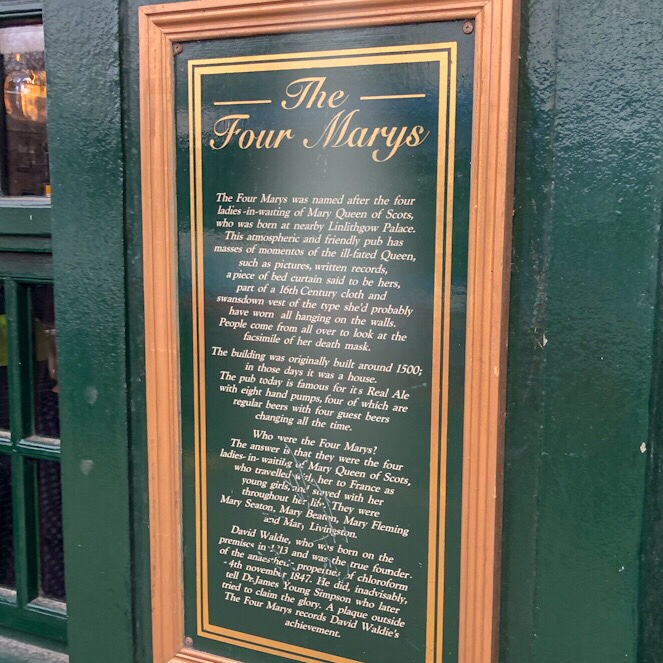
I found this an absolutely charming small town to walk around. The locals with whom I interacted both at the palace and in the town were friendly, warm, and engaging, and although there are several options, I elected to eat at The Four Mary’s pub. The name is a reference to the four handmaidens of Mary, Queen of Scots, all named Mary: Mary Barton, Mary Seaton, Mary Fleming, and Mary Livingston who had accompanied Mary on her journey from the French to the Scottish court in 1560. For beer fans, there are always eight beers on draft and an ample selection of ciders in which I elected a Thistly Cross. They also have a menu that offers lunch and small plates to pair with a delicious brew, or perhaps one of the many local whiskies served here. I ordered fish and chips, as well as a small order of chicken tikka, for a reasonable amount. It is a very comfortable place for lunch although from what the locals said it can get quite busy during the evening and primary commuting hours. Everything is within comfortable walking range – the main attractions, the Church, the train station, and the downtown historic sector and post office.
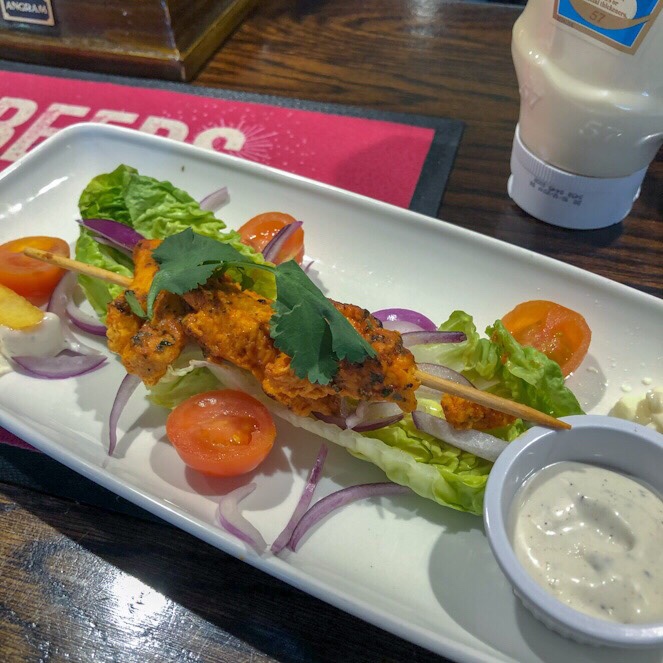
All together, I would heartily recommend at least a stopover in Linlithgow especially if searching for something to do in between Edinburgh and Stirling. There are certainly other parts of it I would have loved to walk around should I have had more time, but I opted to next visit Stirling nearby. The train station in Linlithgow is centrally located and only has two platforms and has frequent service to Stirling, Edinburgh, and Glasgow although I would suggest monitoring the ScotsRail website and mobile app. Both of those do a great job at informing travelers if there are delays. Visiting a smaller town is a wonderful way to experience an authentic experience of a location not always overrun with tourists and a good way to see a glimpse where people work and live.
- announcements
- Attractions
- City Exploration
- City Spotlight
- Europe
- Ireland
- Uncategorized
- United Kingdom Travel

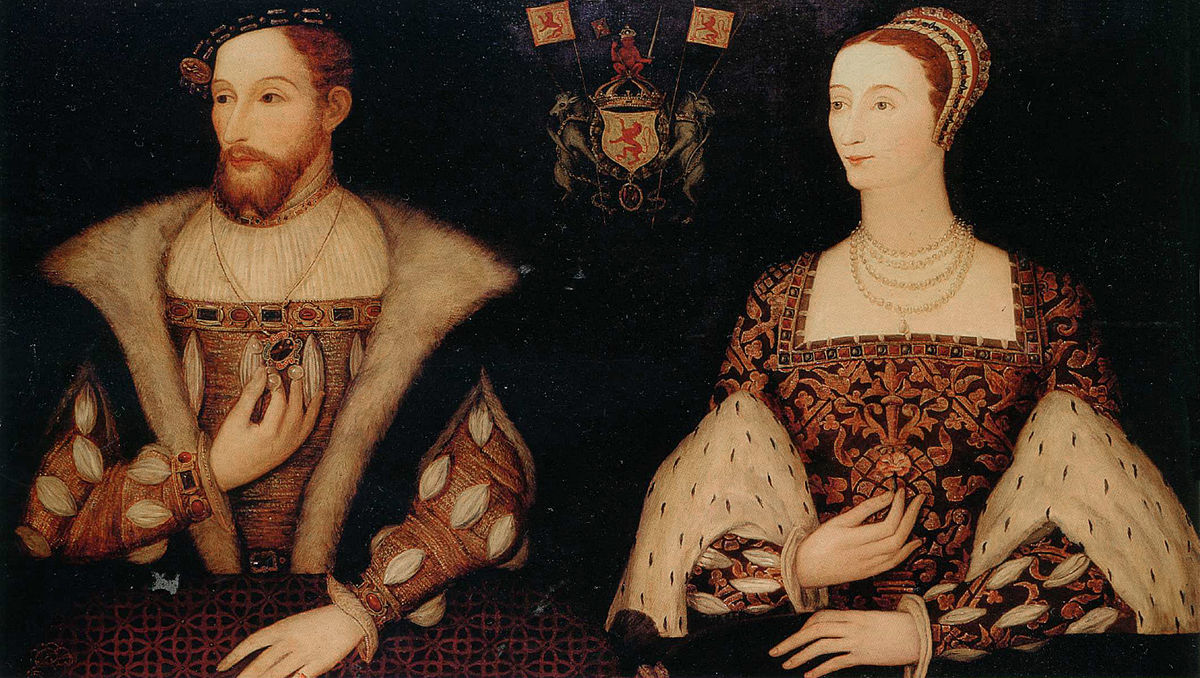
Wow. The history. Just so awesome. I’m thankful places like that are still around for us to visit (even though I’ll probably never see it). Beautiful writing, as always!
LikeLiked by 1 person
Hi Kara, I enjoyed reading this one. As a catholic myself I love your writing style I enjoyed reading it both your own thoughts and experiences during your visit and adding some facts about the history of the places you visited! I never been to Europe and hope someday we can make it there.
LikeLiked by 1 person
Hi April! Thank you so sincerely for reading the post and I am glad that you enjoyed reading it. I was a little worried all the history would bore some, but personally that is what made even the shell of the palace so intriguing to visit – knowing what kind of events had happened there. The church is spectacular and I found it interesting there is now both a Catholic St Michael’s and an Anglican. The one I featured originally was Catholic and where Mary Queen of Scots was baptized and where Stewart monarchs would worship when in Linlithgow! I know there is a stereotype of British, English and Scottish food, of being not so great but I always had great food.
I hope you do make it to Europe! The public transit makes it so much easier to roam than in the States. I found Scotland and England very friendly and interesting and the lack of language barrier helped. I visited Spain and the Bordeaux region of France and hope to feature spots from where I visited there which included several still magnificent Catholic churches and castles alike too!
LikeLike
Thank you so very kindly for reading the post and I agree – I am so glad there are so many churches, castles, and even in this case the shell of palaces to reflect and get a visual of where such historic events would have talen place!
LikeLiked by 1 person
I like how your article is so well structured. It makes it all the more easy and agreeable to read.
In the end, I surprise myself knowing a great deal about a place I had never heard about!
Looking forward to your next destination!
LikeLiked by 1 person
Thank you so much for giving it a read and I am glad that the structure of it made it easy! 👍🏻 I did several revisions before finally doing it this way and I was trying to fuse narration of my experience along wit the history the best I could. I plan to cover more places in UK from my most recent excursion and then delve into some of my experiences from Spain and a slice of France. I may do some US places as well as I am going on a trip with my mom to Austin and anticipate discovering history in the surrounding Texas Hill country region.
Again I am so so glad to have introduced Linlithgow to you and that you found it easy to read!
LikeLike
Another very informative post. I do really love reading about people’s experience in Scotland and it’s a nice reminder that I need to brush up on my Scottish history!!
LikeLiked by 1 person
Thanks so much for reading it and glad that you enjoy reading! I think the same when I see people posting about Midwest US, it is always fascinating to see what interests people when they visit a location!
LikeLiked by 1 person
Hi Kara,
I loved reading this..your historical captures are fantastic and give your readers a reason to want to visit!! Loved Mary Queen of Scotts statue and the church is beautiful. Sounds like a perfect day trip. Let’s see, hope we get time to head there this summer and thanks for entertaining with your lovely words!!!
Zee xx
LikeLiked by 1 person
Thank you so much Zarina for reading my posts and I am so, so delighted that you enjoy the historical slant. I was worried that all the info might be more than what people would want to know, but I am glad that it did give people a reason to visit!
I think Scotland would be so lovely to visit in summer when temperatures would be much better than in winter and early spring!
Thank you for your support, Zee!
LikeLiked by 1 person
Hi Kara, I enjoy reading your post. They are informative, dotted with historical details and I personally love your writing style. I very clear and is a delight to read. I would love to visit Linlithgow. I was not aware Henry VIII wanted to marry infant Mary Scott and her mother too. Have you been to Inchmahome Priory on Lake Mentieth. And Mary of Scott took refuge their as a child. Keep writing.
LikeLiked by 1 person
Hi Usha! Thank you so very much for reading this post and it is so odd about Henry. Henry wanted to marry Mary of guise, Mary Queen of Scotts mother, but have his son Edwad VI who was also an infant at the time marry Mary. I have not visited Inchmahome Priory but I would love to given the opportunity.
I am appreciative of your support and that you enjoy reading my writing!
LikeLiked by 1 person
I love the history and the Kings Fountain is beautiful. I hadn’t even heard of it before but will visit when next in Scotland.
LikeLiked by 1 person
Thank you so much for reading it! The King’s Fountain is so neat, and all the symbology on it is fascinating as well. Linlithgow is a perfect place to stop especially if exploring or venturing out of one of the bigger Scottish cities like Edinburgh.
LikeLike
Who would know that there was so much to experience and explore right outside of Edinburgh? You did a wonderful job detailing your experience.
LikeLiked by 1 person
I was shocked that more people don’t visit here, actually! I know sometimes there will be people stopping for lunch in between castle hunting but I was really floored by how stunning and vibrant St Michaels Parish was and how uniquely it contrasted the palace ruins! Thank you so much for reading it and I am glad that you enjoyed it.
LikeLiked by 1 person
You know I love me some castles and cathedralsand grand churches with magnificent naves and organs lol. Never heard of this town and its history and I used to be obsessed with English history. The intermarriages with the Scots & French made me know some Scot history too. I def gotta do Scotland when next across the pond.
LikeLiked by 1 person
Yes!! And i am always a sucker for for pretty churches, pipe organs, interesting castles and palaces too. I always was so interested in Tudor, and Plantagenet history that sometimes I think I accidentally overlooked some of the Scots and Stuart history which is also so fascinating. I really think you would love Scotland – the folks are so friendly and eager to talk about their history which I also to be true in nearby Stirling as well. I need to write about that place soon. Stirling Castle is what I imagine when I hear “Medieval Castle,” moat and everything. Thanks so much for reading the post on Linlithgow!
LikeLiked by 1 person
Another thorough interesting blog. The history lesson was perfect, I only just watched the Mary Queen of Scots movie, and you filled in so many blanks. Love your style of writing, such a joy to read.
LikeLiked by 1 person
Hi John,
I am so pleased that you enjoyed it! And I enjoyed that movie even with the liberties taken – like you said a lot of historical context was left out. I played the beautiful soundtrack when I was landing in Edinburgh and wandering around.
I was worried of it boring people with all the history! I know a lot of people overlook this particular city but it was significant for both Mary and Stewart monarchs and therefore Scottish history.
Thanks again for reading it! 🦋
LikeLike
What a great post! I really love how you incorporate so much history. I felt transported in time and was so wonderful to learn about this charming town. I will have to make a point to visit on my next trip to Scotland!
LikeLiked by 1 person
Thank you so very much for reading it and I am pleased that you want to make it a stop! It is such a nice place to visit and I think honestly captures a place where people typically live. In Edinburgh, so many of people are commuting from outside cities like Linlithgow!
LikeLike
I think your passion for history always comes across in your travels, Kara! This is a delightful excursion, and you provided plenty of helpful tips. I wholly agree that getting out of touristy areas is a great way to learn more about the place you’re visiting. I’m a little sad there was no picture of the fish and chips, though 😉
LikeLiked by 1 person
Thanks so much for reading it Lynn and I am so glad you enjoyed reading it! Let’s put it this say – the reason there is no pic or the fish and chips is because I was hungry enough to devour them before thinking of taking a photo 😂
LikeLiked by 1 person
Hi Kara,
I like your point about some of the places you don’t plan on visiting end up being the most memorable. This has been true on many occasions during my travels. I had a similar experince in Bordeaux. This was another insightful history lesson for me. Thank you- I look forward to visiting Linlithgow when in Scotland.
-Leesa
LikeLiked by 1 person
Hi Leesa!
Thank you so sincerely for giving this post a read and I am happy that you found it insightful! And yes – I think sometimes no matter how great an itinerary is – it is good to go off the cuff and be willing to be flexible in order to have experiences like I had in St Michael’s Parish unexpectedly stopping in there.
I do think genuinely believe you would enjoy Linlithgow, and Stirling which is a nearby larger college I intend to write about in a future post!
– Kara
LikeLike
So much history here! Your voice took me to Linlithgow — past and present. I really enjoyed reading this one as it fed my love for history and my wanderlust for discovering new places. Thanks for introducing me to this charming town.
LikeLiked by 1 person
Thank you so much for giving it a read! I am so glad that you enjoyed the history of it and that you found it charming!
LikeLike
Another great post steeped in history, Kara! I love the Stuart insignia. This makes me want to learn more about Mary Queen of Scots, and about her mother, who certainly chose well in not marrying Henry VIII. Visiting a small town, I agree, is a great way to get out of the crowd and make some unexpected finds.
LikeLiked by 1 person
Thanks so much for giving it a read Cynthia and so glad you found it interesting! Both Mary’s – of Guise and Mary Queen of Scots are such fascinating figures in their own right for sure. Antonia Fraser’s bio on Mary Queen of Scots is excellent and a recent book called “The Scourge of Henry VIII” on Mary of Guise is equally great by Melanie Clegg! I like how much big towns have to offer for sure bur venturing to small and midsized towns and villages is sometimes even more enjoyable!
LikeLike
Beautiful format and window into history. Great job Kara (and Bailey)!
LikeLiked by 1 person
Thank you so much for reading it and happy you enjoyed it, Andreana 💞🦋
LikeLike